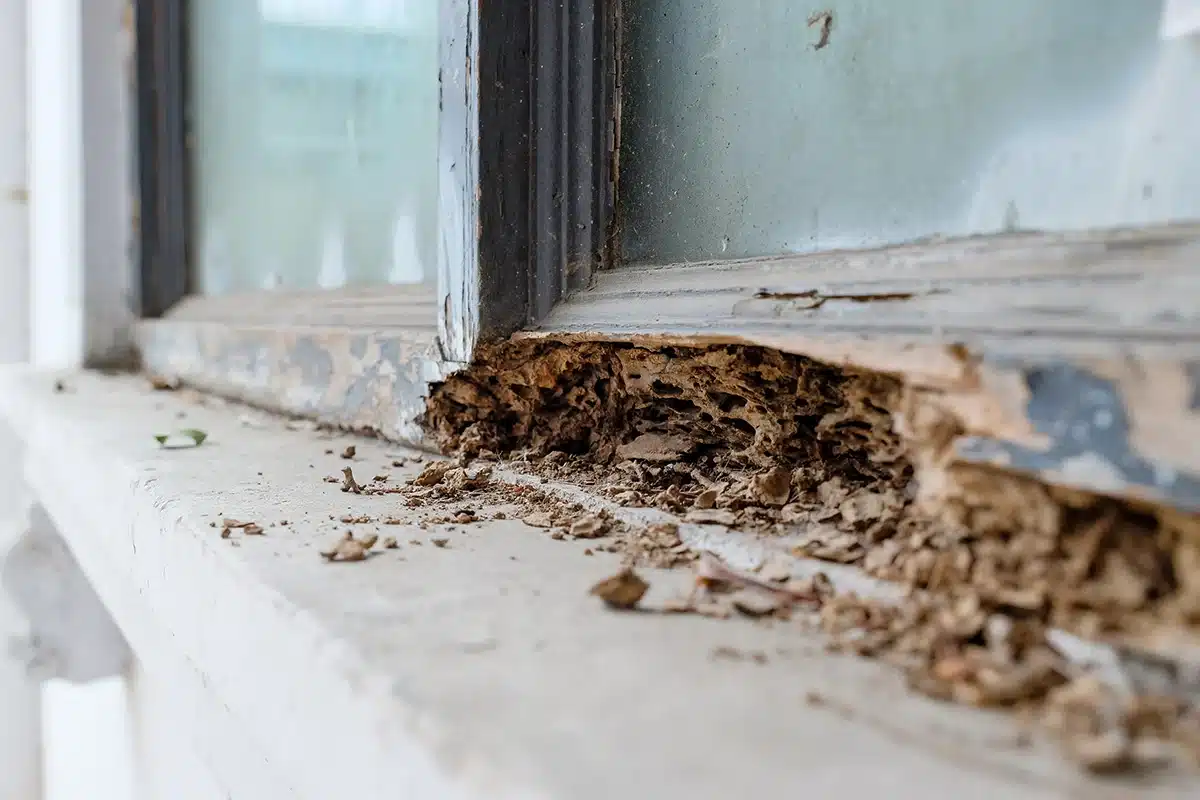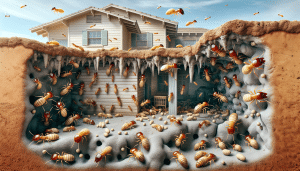You spot the first sign—a faint pile of wings near the window or a few pin-sized holes in your baseboard. Maybe you hear a light clicking sound at night. Whatever it is, it’s unsettling. Termites are Arizona’s silent destroyers, and once they’ve found your home, they rarely leave on their own. The good news? You can stop them. Treating termites in Arizona isn’t complicated when you know how they live, where they hide, and what really works in this desert climate.
Contents
- 1 Understanding Arizona’s Termite Problem
- 2 Step One: Confirm the Infestation
- 3 Step Two: Treat the Source, Not Just the Symptoms
- 4 Step Three: Prevent the Next Wave
- 5 Natural vs. Chemical Treatments: What Works Best in Arizona?
- 6 Why Termite Treatment in Arizona Is Different
- 7 Long-Term Termite Control: The Smart Investment
- 8 The Bottom Line: Act Early, Sleep Easier
Understanding Arizona’s Termite Problem
Let’s get one thing clear—Arizona is termite country. The warm soil and mild winters create the perfect breeding ground for both subterranean and drywood termites, the two species most common in Maricopa County.
Subterranean termites live underground, traveling through mud tubes to reach wood in your home. They’re stealthy, relentless, and responsible for most structural damage. Drywood termites, on the other hand, live inside wood itself—no soil contact needed. That means they can infest furniture, rafters, and even door frames.
The problem? Both species can eat 24/7. You might not see visible damage until it’s extensive. That’s why proper treatment isn’t a DIY project—it’s strategic, targeted, and ongoing.
Step One: Confirm the Infestation
Before treating anything, you’ve got to be sure termites are the real issue. People sometimes confuse carpenter ants or powderpost beetles for termites. The difference comes down to how the damage looks: termites eat wood from the inside out, leaving a thin shell of paint or veneer that collapses when pressed.
Signs of a true termite problem include:
- Mud tubes on walls or foundations
- Hollow-sounding wood
- Discarded wings around windows or doors
- Frass (fine, sand-like droppings) near baseboards
If any of that sounds familiar, it’s time to get a professional inspection. A trained technician can identify the species, map out colony locations, and choose the right treatment plan for your structure type and soil condition.
Step Two: Treat the Source, Not Just the Symptoms
Here’s the thing about termite control—it’s not about spraying and hoping for the best. It’s about reaching the colony.
For subterranean termites, treatments often start with a soil barrier or a baiting system.
- Soil treatments use non-repellent termiticides like Termidor HE, applied around the foundation. Termites walk through it, share it, and spread it throughout the colony until it collapses.
- Baiting systems like Sentricon work differently. Small bait stations are placed in the ground, attracting foraging termites that carry the active ingredient back to their queen. Over time, the colony dies off entirely.
For drywood termites, a localized approach is best. That can include:
- Spot treatments using foams or dusts that penetrate wood cavities.
- Heat treatments for infested furniture or attic beams, raising internal temperatures high enough to kill termites without chemicals.
Each strategy has its strengths. A licensed termite control professional will typically recommend a combination, depending on how widespread the infestation is.
Step Three: Prevent the Next Wave
Treating termites once doesn’t mean they’re gone forever. Arizona’s desert soil breeds new colonies constantly, and without prevention, reinfestation can happen within months.
That’s why preventative maintenance is key.
- Schedule annual inspections, especially if you’ve had termite activity before.
- Keep wood and mulch away from the foundation—at least 12 inches of clearance.
- Eliminate moisture sources, like leaky sprinklers, AC condensation lines, or pooled water near your home.
- Seal cracks and expansion joints in your foundation to cut off entry points.
Some homeowners even invest in continuous monitoring systems, which alert pest control teams the moment termites appear again. Think of it as a security system for your foundation.
Natural vs. Chemical Treatments: What Works Best in Arizona?
Arizona homeowners often ask if natural termite treatments can handle the problem. The short answer—sometimes. The longer one—depends on the scale.
Essential oils like orange oil or neem oil can help in very localized drywood cases. They break down the termite’s outer shell and interfere with reproduction. But for subterranean colonies with thousands of members, natural methods alone won’t cut it.
Arizona’s dry soil means colonies often build deep underground tunnels, sometimes extending 20 feet or more. That’s territory no household treatment can reach. If you want complete protection, professional-grade solutions are the only way to guarantee results.
Why Termite Treatment in Arizona Is Different
Here’s something most people don’t realize: Arizona termites behave differently than those in wetter regions. Our desert climate changes everything—from how fast they spread to where they nest.
Because subterranean termites depend on moisture, they often use irrigation systems, outdoor plumbing lines, or shaded soil near patios as highways to your home. That’s why treatment plans in Maricopa County typically focus on soil moisture management and strategic barrier placement around those areas.
Drywood termites, on the other hand, thrive in our hot, dry air. They infest rafters, trusses, and even decorative beams—places that might never get checked. Inspections here require both technical expertise and local experience.
Long-Term Termite Control: The Smart Investment
You know what’s worse than finding termites once? Finding them again. That’s why a long-term termite plan pays for itself. Arizona Termite Control offers customizable maintenance programs that include follow-up inspections, soil barrier refreshes, and monitoring systems that keep watch 24/7.
It’s not just about killing bugs—it’s about protecting one of the biggest investments you’ll ever make.
Think about it this way: the average termite colony can eat up to a pound of wood a week. Replacing beams, flooring, or drywall can cost thousands. Preventative termite control? A fraction of that—and it keeps your home standing strong for decades.
The Bottom Line: Act Early, Sleep Easier
Termites don’t wait, and neither should you. Whether you’ve just spotted signs of damage or you’re looking to protect your home for the long haul, professional termite treatment is the only way to make sure the job’s done right.
Don’t let termites eat away at your investment. Get peace of mind with expert inspection and proven treatment solutions from Arizona Termite Control.
By Phone: Call 480-660-3093
By Form: Request a Free Termite Inspection




